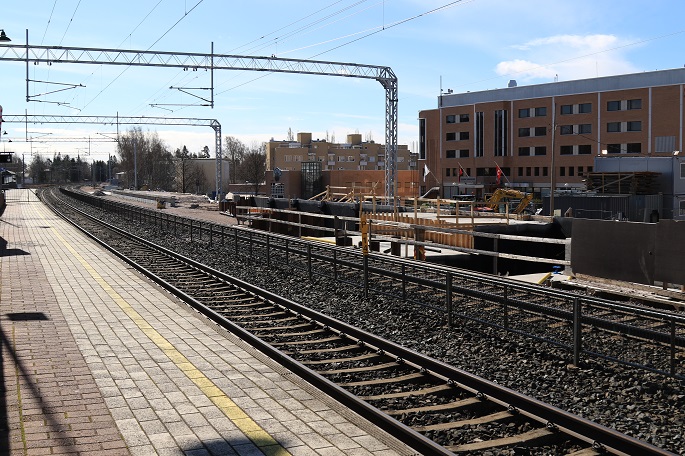Arctic railway not commercially viable: working group
Published : 11 Feb 2019, 20:05
A Finnish-Norwegian working group on Monday did not present any further measures for promoting the railway that would connect Norwegian Arctic coast to the Finnish railway network across the vast areas of northernmost Finland.
While the working group concluded that the plan is not commercially viable, it presented vistas of the Arctic railway as part of a transport route from central Europe to Asia via the Northern Sea Route.
The working group was assigned last spring and its final report was published on Monday.
CHANGES IN BIZ, TRANSPORT COSTS NEEDED
To be financially feasible, the annual transport volume of the railway would have to be around 2.5 million tonnes, the working group said in the report.
Such volumes cannot be regarded realistic without any significant changes in business in the area or in the costs of different transport modes, the group said.
The report notes, however, that it had not been possible to assess all factors affecting the railway project. It would take at least 15 years to plan and then construct the railway.
Private financing could be a more viable alternative, if the project could generate direct income to cover the additional cost of financing.
At the current projected level of profitability, the working group, however, did not see this as a substantial opportunity.
"If project development activities can be linked to the identification of stakeholders, and engagement to funding the project, it can over the long term improve the perception of the project's capacity to fund itself," the report said.
SIGNIFICANCE FOR EUROPE EVALUATED
The working group noted that in the best scenario, an Arctic railway from Rovaniemi to Kirkenes along with the Helsinki-Tallin tunnel and Rail Baltica could be significant for entire Europe by opening a connection to Asia via the Northern Sea Route from Central Europe.
This, however, requires that the planning and background work in these projects has to be of "very high quality and must be carried out so that also the European Union (EU) is behind this entirety of several infrastructure projects".
The group concluded that funding will be needed from the EU, but also from the private and public sectors.
"The extension of the TEN-T core network corridors (the North Sea-Baltic and Scandinavian Mediterranean Corridors) anticipates the growing importance of the Arctic region globally and for the EU," it said.
The group suggested that there should be a way to assess indirect benefits of the project taking into account great increase of transports and possible future activities on the Northern Sea Route.
No political decision on the construction of the railway or the final choice of routing has been made either in Finland or in Norway.
In March 2018, the routing from Rovaniemi, Finland, to Norway's Kirkenes was given as the basis for the appraisals by the working group.
The price of the railway was then given as three billion euros, where the Finnish track was defined as two billion euros.
In preliminary Finnish evaluations, the cheapest connection would have been via Russian territory to Murmansk using tracks that mostly exist, but that routing has received only minimal political support in Finland.
MIXED REACTION IN FINLAND'S LAPLAND
Mika Riipi, the head of the provincial interest organization of Finland's Lapland, said on Monday that the plans must not be buried.
Riipi told newspaper Lapin Kansa that even though the railway is not economically justifiable for the time being, the plans must be viewed with a longer perspective.
Tiina Sanila-Aikio, the chairman of the Finnish Sami Parliament, a body dealing with the cultural self-government of the Samis, welcomed the conclusion not to continue with the plans.
The Samis were opposed to the railway on the basis of its likely impact on reindeer herding and the landscape.
The working group noted that, if the project was to be promoted, the participation of the indigenous people, the Samis, must be ensured so that no irrevocable damage would be caused to their culture or livelihoods.


